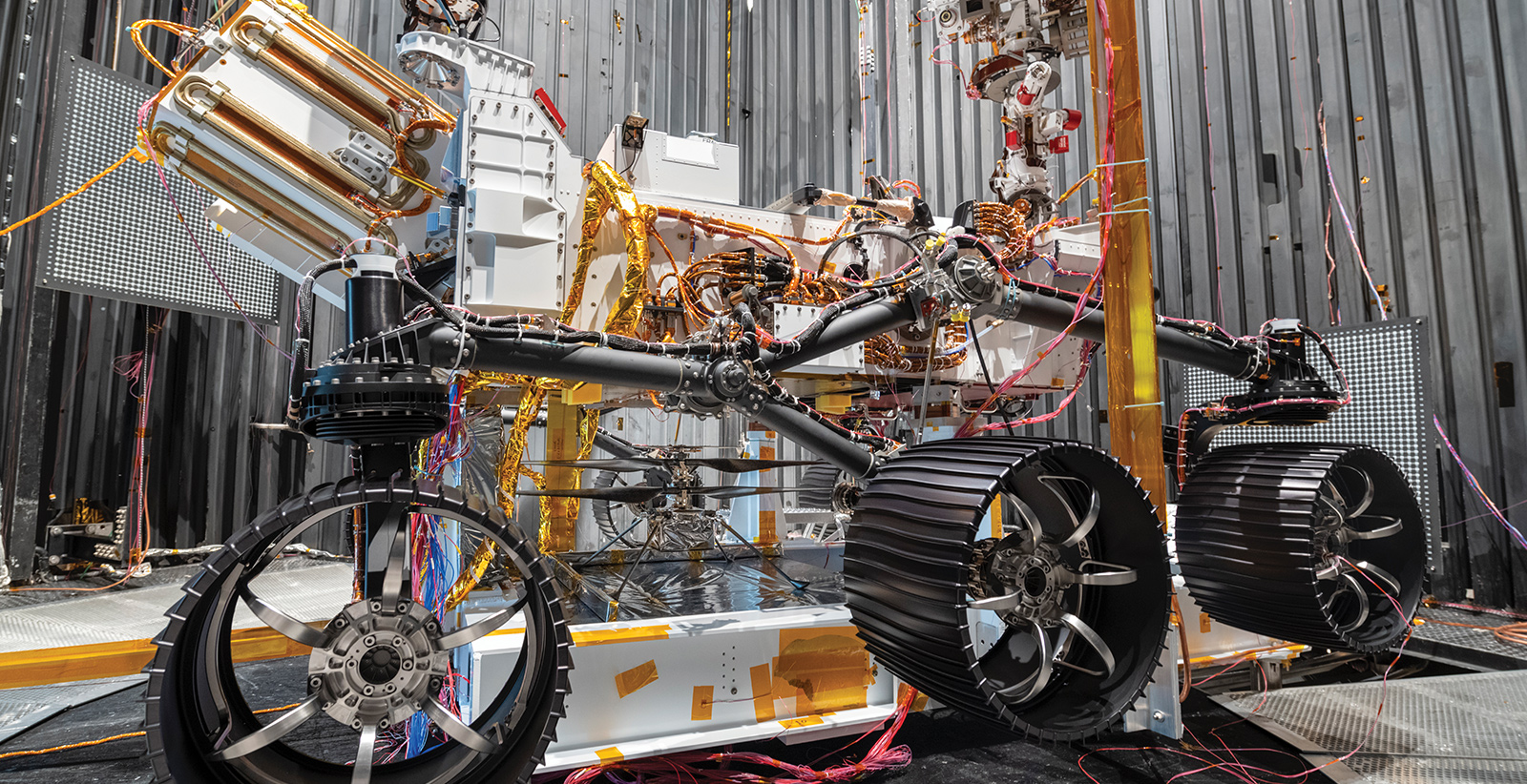Stay Up to Date
Submit your email address to receive the latest industry and Aerospace America news.
The Space Systems Technical Committee fosters the development, application and operation of space systems and addresses emerging issues in the area.
One of the most significant accomplishments of the year was the launch and safe return of NASA astronauts Bob Behnken and Doug Hurley aboard a SpaceX Crew Dragon capsule. This Demo-2 mission, flown under NASA’s Commercial Crew program, represented the first time a private company delivered astronauts to the International Space Station and cleared the way for November’s Crew-1 launch. The May launch delivered the astronauts to the ISS after a 19-hour flight. They returned aboard the Crew Dragon in August, splashing down into the Gulf of Mexico, where a SpaceX vessel retrieved them and the capsule. The astronauts returned an American flag that was left on the ISS during the final space shuttle mission in 2011.
Northrop Grumman’s Mission Extension Vehicle docked in February with Intelsat IS-901, assumed control and began station-keeping maneuvers, extending the life of Intelsat IS-901 for up to five years. This was the first time a spacecraft extended the life of a commercial satellite after docking with it in orbit, according to Northrop Grumman and Intelsat. Another MEV launched in August and was to dock with Intelsat IS-1002 early in 2021.
The international space systems community conducted three Mars missions this year. NASA began its Mars 2020 mission in July with the launch of the Perseverance rover and the Ingenuity helicopter. The rover’s mission is to seek evidence of ancient life and collect samples for a future Mars mission. Perseverance is about the size of an automobile and comparable in size to the Curiosity rover. Ingenuity weighs approximately 2 kilograms and is a technology demonstrator.
The United Arab Emirates launched the Emirates Mars Mission orbiter, nicknamed Al Amal or Hope, in July on an H-2A rocket from the Tanegashima Space Center in southern Japan; it is to reach Martian orbit in February 2021. The primary mission is to observe Mars weather and evaluate how Mars’ weather contributes to atmosphere loss. China launched the Tianwen-1 spacecraft on a Long March-5 heavy-lift launch vehicle in July; it is scheduled to reach Martian orbit in February 2021. The spacecraft, including an orbiter, a lander and a rover, is to loiter in Mars orbit and release the lander and rover in April 2021. The primary objectives for this mission are to conduct a survey of the planet from orbit and on the ground.
The U.S. Space Force launched the X-37B spaceplane in May on an Atlas V rocket, the first launch for the X-37B since 2017. Boeing’s Phantom Works division built the X-37B, which first launched in April 2010. Two X-37B vehicles have been built, with the previous OTV-5 mission staying on orbit for 780 days. The X-37 has launched on two launch vehicles: United Launch Alliance’s Atlas V and SpaceX’s Falcon 9.
Contributors: John Carsten and Patrick Chai
Related Posts
Stay Up to Date
Submit your email address to receive the latest industry and Aerospace America news.




